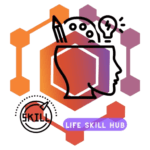Table of Contents
ToggleThe landscape of media and journalism has undergone a radical transformation in the digital era. The advent of technology has revolutionized how news is consumed, shared, and distributed, profoundly impacting both the industry and its audience.
1. Accessibility and Instant Updates
24/7 Access: Digital platforms have democratized news consumption, offering round-the-clock access to information irrespective of geographical boundaries or time zones.
Real-Time Updates: Social media, news websites, and apps enable instantaneous updates, keeping users informed about breaking news and unfolding events as they happen.
2. Diverse Content Formats
Multimedia Storytelling: News is no longer confined to text. Visual elements, videos, podcasts, and interactive graphics are incorporated, enhancing storytelling and engagement.
Personalized Content: Algorithms curate personalized content feeds, tailoring news consumption based on individual preferences and browsing behaviors.
3. Citizen Journalism and User Engagement
Empowerment of Users: Social media platforms allow users to contribute to news by sharing eyewitness accounts, fostering citizen journalism, and expanding news coverage.
Enhanced Interaction: Audiences actively engage with news content through comments, discussions, and sharing, influencing the conversation around news stories.
4. Challenges and Ethical Considerations
Combatting Misinformation: The rise of user-generated content poses challenges in verifying facts, leading to the spread of misinformation, requiring stringent fact-checking and ethical reporting.
Preserving Journalism Ethics: Journalistic integrity faces challenges amidst the need for click-worthy headlines and rapid news cycles, emphasizing the importance of unbiased reporting.
5. Shifts in Business Models
Monetization Challenges: Traditional revenue streams like advertising face disruption, prompting media organizations to explore subscription models and alternative revenue sources.
Adoption of Digital Strategies: Media outlets transition towards digital-first strategies, adapting to changing audience behaviors and preferences for online news consumption.
Conclusion: Evolving Paradigm of News Consumption
The digital age has transformed the way news is disseminated, consumed, and interacted with. Media and journalism continually evolve to meet the demands of a digitally savvy audience, emphasizing real-time updates, engaging storytelling formats, and the need for credible, ethical reporting in a rapidly changing media landscape.
This overview highlights how technological advancements have reshaped media and journalism, presenting new opportunities and challenges in news consumption, distribution, and audience engagement in the digital era.
